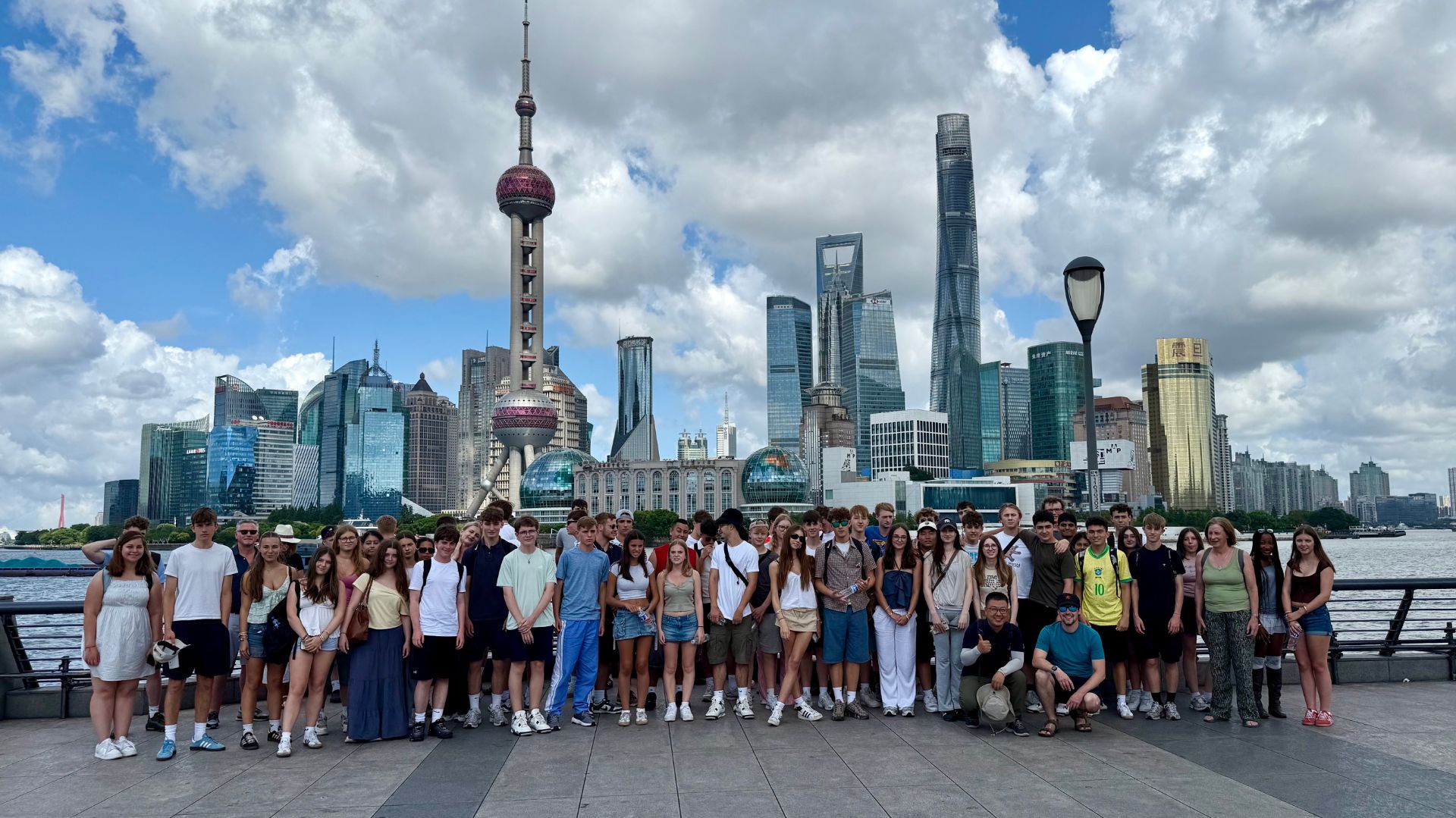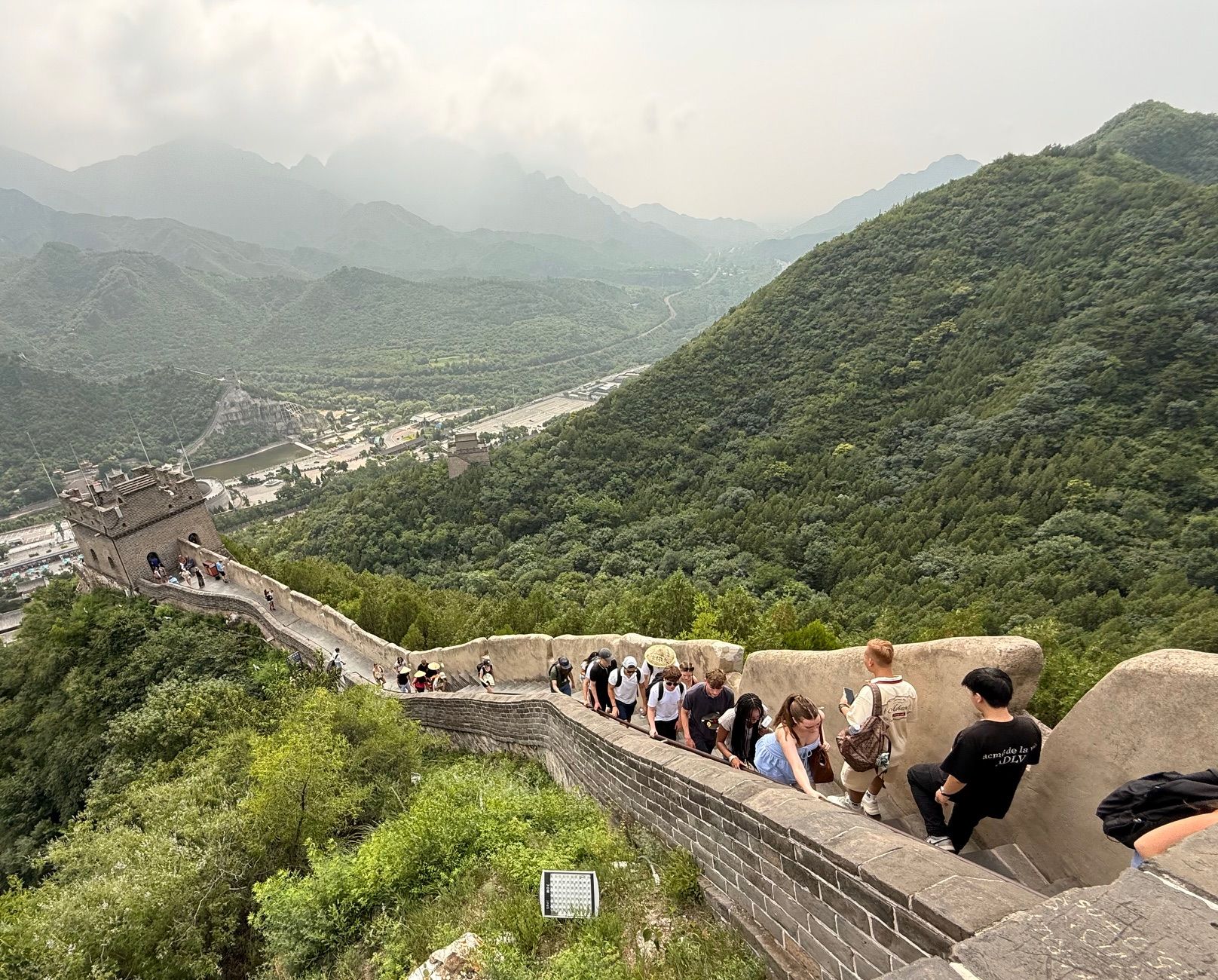15th August 2025
Business & Economics trip to China

On the 1st of July, 62 Business and Economics students and 5 of their teachers headed to China for the educational trip of a lifetime. We travelled to three great cities by plane and bullet train to visit and observe historic sites as well as businesses and infrastructure. From our tour rep and guides we learnt about the social, political and economic development of this impressive country and culture. The language barrier, heat and confusing payment tech may have provided some challenges, but it’s all part of the travel adventure and I think it’s safe to say that we all loved this enrichment experience! Some of the teachers who supported students on the trip reflect on their experiences below.
Tim Griffin
As an Economics teacher, I learnt that China’s rapid development is not just visible in its towering skylines and high-speed railways, but also in the strategic planning behind its economic zones, manufacturing hubs and consumer technology. Visits to companies like Yanjing Beer Corporation and Shanghai Volkswagen gave students real-world insight into globalisation, economies of scale, and innovation in action.
Highlight of the trip – The Great Wall of China. Standing on this ancient wonder, surrounded by breathtaking views, was a powerful reminder of China’s rich history and enduring legacy.
Biggest challenge – Chinese immigration. Navigating the entry process was a test of patience and organisation, but it also highlighted the importance of preparation and adaptability when travelling internationally.
This trip was more than sightseeing – it was a deep dive into a dynamic culture and economy that will stay with us all for years to come.
Andy Shepherd
As a Business teacher, I learnt that when a government develops and invests so significantly into an industrial strategy that creates employment, products and services for 1.42 billion citizens, the results can be spectacular. Industry is celebrated in China as evidenced by the infrastructure and support provided by the government, the awards dished out by the Government, and the adverts on TV promoting infrastructure rather than shampoo and fast-food. We visited the VW & SAIC car factory in Shanghai, and they manufacture 17,000 cars every day whereas the Mini factory in Oxford manufactures 1,000 cars every day. As a country they are still achieving 5% GPD growth every year despite the volume of businesses that failed due to COVID lockdowns and no government support. Business in this country thrives.
Highlight of the trip – The Great Wall. I have always fascinated by this iconic 22,000km long defence mechanism. Walking along the tiny section we visited was a life highlight due to its history, its magnificence, and the experience shared with students and colleagues.
Biggest challenge – TenCent and Alibaba have been on my radar for a while, so it was fascinating to learn about and use WeChat and AliPay. However, these methods of payment that most Chinese businesses and customers use proved to be erratic for us tourists! This tech gap made life a bit difficult on a couple of occasions, but we muddled through.
Paul Cruttenden
As a Business teacher, I learnt that international and overseas markets can be hugely attractive to facilitate growth. Premium and luxury brands in say the fashion and retail industry have enjoyed considerable success. Across the 3 cities we visited I was struck by the volume of domestic car brands which were far more common than European or other country marques. The growth of Chinese brands is staggering. The Chinese market share of local brands has increased from 30% in the first half of 2020 to over 65% in early 2025. This said in a market size of over 30 million new vehicle sales in 2024 volume is perhaps as important as share. For BMW, China represents 29.2% of global sales, comfortably eclipsing its second biggest market in the US at 16.3%. Germany and the UK account for 10.8% and 6.9% respectively. In unit terms the 714,500 cars delivered in 2024 (a 14% drop from 826,300) in China dwarf the 125,000 sold in the UK. As Chinese brands such as BYD look to compete in and penetrate the UK and other markets a key question is how will incumbent brands fair in the face to high quality, competitively priced competition. Will we see a repeat of the effects of Japanese brands in the 80s?
Highlight of the trip – It isn’t visible from space; however it’s not every day you get to amble around something that’s well over half a millennia old. The part of The Great Wall that we walked along is one of the younger sections of the wall having been built between 1368 - 1398. Earliest sections date from the 7th century BC. A genuine ‘wonder of the world’, walking The Great Wall was an experience that will be long remembered.



